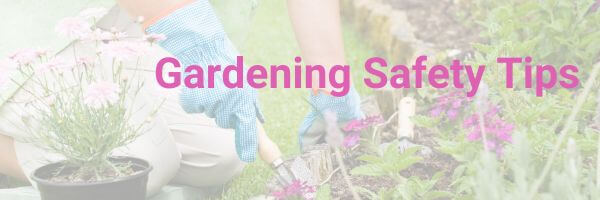
After months on end of cold weather and indoor activities, Wisconsinites are clamoring for outdoor projects, including gardening and other yard work. But the usually modest price of do-it-yourself projects to beautify your home and garden can turn out to be more costly than you think. It can cost you an arm and a leg…or even a back, shoulder, or knee.
“I see a lot of people during the summer months with injuries from yard work, gardening, and spring cleaning,” says Joe Waller, a physical therapist who treats at Orthopedic & Spine Therapy in Waupaca. “I see about 50 percent back strains and leg pain from lifting, bending, and digging activities and about 50 percent shoulder strains and aches from reaching activities like raking, washing windows, and painting.”
But according to Waller, these types of aches and pains don’t have to go hand-in-hand with yard work. As with most things in life, preparation is the key.
“Ideally, it’s good to get into a walking routine early in the season before tackling yard work to get your back, legs, and arms loosened up,” Waller states. “But let’s be realistic. When the sun comes out, the lawn needs to be mowed.”
To fit injury-preventing techniques into a busy schedule, Waller recommends the following easy steps:
- Warm up a little with a walk around the block. It shouldn’t take too much time away from your work, but a quick walk can get your blood circulating and prepare your muscles for activity.
- Be sure to do some simple, non-bouncing stretches both before and after your work. A light stretch before you start will help get you ready to work, while a more thorough stretch after you’ve finished can actually prevent injury. (Talk to your doctor or your local physical therapist if you need suggestions for proper stretches.)
Once you’re ready to tackle the job, proper body mechanics becomes the key issue. “Proper body mechanics will save you from injury,” explains Waller, “but putting the effort into moving correctly generally makes your task take a little longer. Try to remember that it’s worth it to take the extra time.”
Here are a few general rules to follow when it comes to working around the house:
- Bending/Lifting. Bend at the knees – rather than the waist – to lift. Keep the load close to your body. Don’t twist at your waist while lifting; move your feet to face the direction you need to move instead. In other words, your face and your feet should always point in the same direction while lifting and carrying.
- Alternate. Try to alternate sides often to give your muscles a rest. When raking, for instance, switch your top hand and the side of your body you rake on (as well as your front foot).
- Reaching Above Your Head. Avoid reaching for prolonged periods of time (more than 5 minutes). Try to switch hands/arms and take breaks often. If possible, use a ladder to bring the activity in front of you rather than forcing yourself to reach.
- Reaching Sideways or Forward. As a general rule, bring the activity to you rather than reaching and straining too far away. For example, move the ladder often to avoid strain injuries or falling. If you’re gardening, kneel in the mud to be closer to the plants rather than reaching from the grass or sidewalk.
Ultimately, listen to your body. “Let the pain be your guide,” offers Waller. “If it starts to hurt, it’s time to take a break.”
Of course, by then it may be too late. If you find yourself injured, Waller says the first step in treating a strain or sprain is to apply ice.
“My rule of thumb is generally to ice anything but frostbite,” he explains. “Heat will feel good while it’s on but can cause more pain in the end. Ice will decrease pain, decrease inflammation, and can decrease muscle spasms.” Waller recommends 10-15 minutes of ice in a pillow case (not directly on your skin) two to three times each day.
The second step is to stretch or perform a motion exercise within your pain tolerance.
If symptoms don’t go away within 3-5 days or if you would rate your pain at a 9 or 10 on a scale of 1-10, it’s time to seek additional medical help. Other warning signs include an inability to move a joint, significant redness and swelling not reduced by icing, or “electric-type” pain going up or down your arm or leg (indicates possible nerve damage).
“You may want to consider asking your doctor for a referral to physical therapy with injuries such as these,” Waller adds. “Therapy can help you recover faster and more completely.” Other advantages to treatment at Orthopedic & Spine Therapy include decreasing symptoms without the use of medications, figuring out what about you mechanically was not prepared for the task that injured you so you can be aware of it in the future, and learning stretches and strengthening exercises to prevent future injuries.
In the end, it’s all about helping your body help itself. “If there’s only one thing you learn from all of this,” Waller declares, “it should be to stretch, stretch, stretch…both before and after your activity.”
